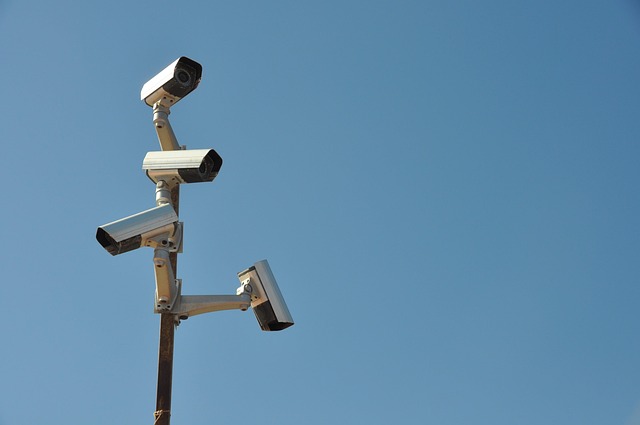License Plate Recognition (LPR) technology, integrated with CCTV surveillance systems, enhances vehicle tracking and security by automatically analyzing license plate data. This combination improves traffic management, crime prevention, and fleet operations, while deterring theft and ensuring compliance. Despite challenges like evolving vehicle designs and environmental factors, advancements in computer vision and deep learning have boosted LPR accuracy. Integrating LPR with CCTV surveillance systems and intelligent transportation systems (ITS) promises smarter, safer urban landscapes through real-time traffic monitoring, automated parking management, and enhanced security.
License Plate Recognition (LPR) technology is transforming vehicle tracking and security. This powerful tool enables automated identification of vehicles by reading and analyzing license plates, facilitating efficient management of traffic flow, parking, and security protocols. By integrating LPR with existing CCTV surveillance systems, organizations can achieve enhanced visibility, improved safety, and better data-driven decision making. This article explores the benefits, applications, challenges, and future prospects of LPR within CCTV surveillance systems.
Understanding License Plate Recognition (LPR) Technology
License Plate Recognition (LPR) technology has emerged as a pivotal component in modern vehicle tracking and traffic management systems, such as sophisticated CCTV surveillance networks. This innovative solution leverages advanced computer vision algorithms to identify and extract information from license plates with remarkable accuracy. By integrating LPR into CCTV surveillance systems, cities and organizations can efficiently monitor and track vehicles, enhancing overall security and facilitating effective transportation management.
The process involves capturing high-resolution images of vehicle license plates, followed by sophisticated data extraction techniques. These algorithms analyze the characters and numbers, comparing them to vast databases to identify the associated vehicle. This technology is not only crucial for traffic enforcement but also plays a vital role in parking management, toll collection systems, and even crime prevention, ensuring that vehicles adhere to traffic rules and regulations.
Integrating LPR with CCTV Surveillance Systems: Benefits and Advantages
Integrating License Plate Recognition (LPR) with CCTV surveillance systems offers a powerful synergy for vehicle tracking and security. This technology combination enhances traditional CCTV capabilities by enabling automated license plate capture, storage, and analysis. With LPR, CCTV systems can not only monitor and record visual data but also extract critical information from vehicles, such as their make, model, and registration details.
This integration brings several benefits, including improved vehicle tracking accuracy, efficient traffic management, and enhanced security measures. By correlating license plate data with CCTV footage, authorities can quickly identify and track suspicious vehicles, monitor parking areas, and assist in forensic investigations. The advanced analytics provided by LPR systems allow for real-time vehicle recognition, enabling smoother operations during events or in high-traffic areas, where traditional manual identification would be time-consuming and less accurate.
Applications of LPR in Vehicle Tracking and Security
License Plate Recognition (LPR) technology has emerged as a powerful tool in vehicle tracking and security, offering numerous applications across various sectors. One of its primary uses is within CCTV surveillance systems, where it enables efficient and accurate identification of vehicles in real-time. This capability is invaluable for traffic monitoring, congestion management, and even crime prevention. By analyzing license plates, LPR systems can track vehicle movements, detect unauthorized entries into restricted areas, and aid in investigating criminal activities.
In vehicle tracking, LPR plays a pivotal role in fleet management, allowing businesses to monitor their assets effectively. It facilitates the creation of digital records, enabling companies to trace the location and history of their vehicles. Moreover, this technology enhances security by deterring theft and ensuring compliance with traffic regulations. With LPR-enabled CCTV systems, authorities can remotely monitor highways, parking lots, and urban areas, providing a robust framework for maintaining public safety.
Challenges and Future Prospects of LPR in CCTV Surveillance
The implementation of License Plate Recognition (LPR) technology in CCTV surveillance systems presents both significant challenges and promising future prospects. One of the primary hurdles is the constant evolution of vehicle design, including variations in plate sizes, fonts, and materials used, which can hinder accurate recognition. Additionally, environmental factors such as lighting conditions, angle of view, and obstacles like shadows or debris can negatively impact LPR performance. Despite these challenges, the future looks bright for LPR in CCTV surveillance. Advancements in computer vision algorithms and deep learning models have led to improved accuracy and robustness. The integration of LPR with other intelligent transportation systems (ITS) offers potential benefits, such as real-time traffic monitoring, automated parking management, and enhanced security measures, transforming urban landscapes into smarter and safer environments.
License Plate Recognition (LPR) technology has emerged as a powerful tool within the realm of CCTV surveillance systems, offering enhanced vehicle tracking and security solutions. By seamlessly integrating LPR with existing surveillance infrastructure, organizations can reap numerous benefits, including improved traffic management, efficient law enforcement, and better public safety. Despite current challenges such as varying plate formats and environmental conditions, future advancements in LPR algorithms and hardware promise to overcome these obstacles. As this technology continues to evolve, its potential to revolutionize vehicle tracking and contribute to safer communities becomes increasingly apparent.
